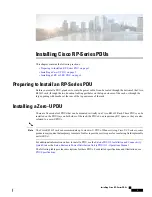
The outputs of the function are the START, TRIP and BLOCKED signals. The overvoltage function
uses a total of eight (8) separate setting groups which can be selected from one common source.
The function can operate on instant or time-delayed mode. Definite time (DT) delay can be selected in
the In time-delayed mode.
The inputs for the function are the following:
• operating mode selections
• setting parameters
• digital inputs and logic signals
• measured and pre-processed magnitudes.
The function outputs the START, TRIP and BLOCKED signals which can be used for direct I/O
controlling and user logic programming. The function generates general time-stamped ON/OFF events
to the common event buffer from each of the three (3) output signals. In the instant operating mode the
function outputs START and TRIP events simultaneously with an equivalent time stamp. The time stamp
resolution is 1 ms. The function also provides a resettable cumulative counter for the START, TRIP and
BLOCKED events.
Pick-up
The
Pick-up setting Mag setting parameter controls the pick-up of the PGx>/< function. This defines
the maximum or minimum allowed measured magnitude before action from the function. The function
constantly calculates the ratio between the set and the measured magnitudes. The user can set the
reset hysteresis in the function (by default 3 %). It is always relative to the
Pick-up setting Mag value.
Table. 5.3.22 - 170. Pick-up settings.
Name
Description
Range
Step
Default
PS# Pick-up setting Mag#/calc >/<
Pick-up magnitude
-5 000 000.0000…5 000 000.0000
0.0001
0.01
PS# Setting hysteresis Mag#
Setting hysteresis
0.0000…50.0000%
0.0001%
3%
Definite operating time delay
Delay setting
0.000…1800.000s
0.005s
0.04s
Release time delays
Pick-up release delay
0.000…1800.000s
0.005s
0.06s
The pick-up activation of the function is not directly equal to the START signal generation of the
function. The START signal is allowed if the blocking condition is not active.
The user can reset characteristics through the application. The default setting is a 60 ms delay; the
time calculation is held during the release time.
In the release delay option the operating time counter calculates the operating time during the release.
When using this option the function does not trip if the input signal is not re-activated while the release
time count is on-going.
Function blocking
The block signal is checked in the beginning of each program cycle. The blocking signal is received
from the blocking matrix in the function's dedicated input. If the blocking signal is not activated when
the pick-up element activates, a START signal is generated and the function proceeds to the time
characteristics calculation.
If the blocking signal is active when the pick-up element activates, a BLOCKED signal is generated and
the function does not process the situation further. If the START function has been activated before the
blocking signal, it resets and the release time characteristics are processed similarly to when the pick-
up signal is reset.
A
AQ
Q-F213
-F213
Instruction manual
Version: 2.04
256















































